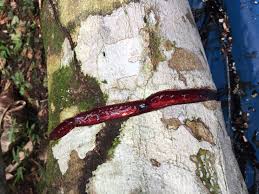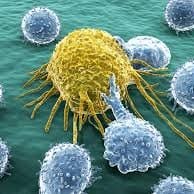
Sangre De Grado Traditional Preparation
For external use, the resin/sap is rubbed directly on the affected area several times daily and allowed to dry. Please note: the resin is red! It will temporarily stain the skin a reddish-brown (which will wash off), but it will permanently stain clothing. Rubbing the resin in the palm of the hand first or directly where applied will thicken the resin into a thin, lighter colored paste, which helps form a second skin on top of a wound or rash and reduces staining. For internal use, the traditional remedy is 10-15 drops in a small amount of liquid, taken 1-3 times daily (be prepared, however; it tastes quite dreadful).
Contraindications: None reported.
Drug Interactions: None reported.

Sangre De Grado General Information
Sangre de grado is a medium-sized to large tree that grows from 10–20 m high in the upper Amazon region of Peru, Ecuador, and Colombia. Although tall, the trunk is usually less than 30 cm in diameter and is covered by smooth, mottled bark. It has large, heart-shaped, bright-green leaves and unique, greenish-white flowers on long stalks. Its Peruvian name, sangre de grado, means “blood of the dragon” (in Spanish). In Ecuador, it’s named sangre de drago (which means “dragon’s blood” as well). When the trunk of the tree is cut or wounded, a dark red, sappy resin oozes out as if the tree is bleeding—earning this local name. The genus Croton is a large one, with 750 species of trees and shrubs distributed across the tropical and subtropical regions of both hemispheres. Crotons are rich in active alkaloids, and several species are well-known medicinal plants used as purgatives and tonics.

1.
for bacterial infections, blood cleansing, cancer, digestive disorders, fever, fungal infections, hemorrhages, stomach ulcers, tumors, ulcer (mouth), wounds, and for its astringent (drying) effects.

2.
for cancer, inflammation, wounds

3.
diabetes, diarrhea, eczema, fractures, fungal infections, gastrointestinal problems, hemorrhages, hemorrhoids, infections, infected gums, insect bites, laryngitis, rheumatism, skin rashes, skin cancer, throat problems, toothache, tumors, ulcers (intestinal, mouth, and stomach), vaginitis, vaginal infections, vaginal discharge, wounds, and as an antiseptic

4.
eczema, fungal infections (skin, nail & foot), hemorrhages, inflammation, insect bites, itching, pain, rashes, ulcers (intestinal, mouth, skin, and stomach), wounds, and as an antiseptic
